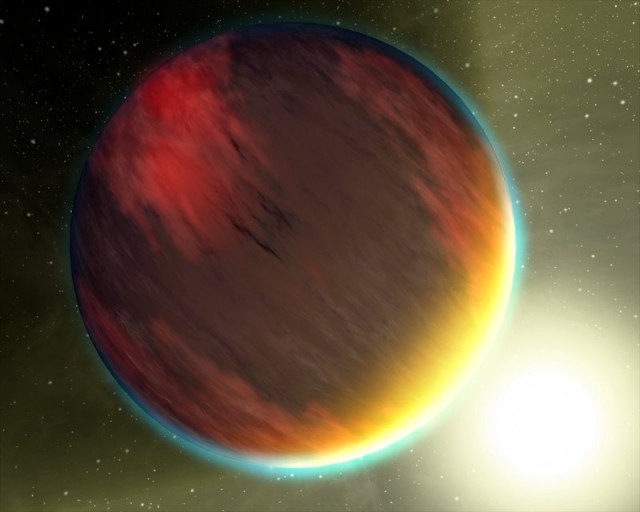
The Solar System is a remarkably orderly place. The eight planets orbit in the same direction the Sun rotates and in nearly the same plane as the Sun's equator. Many smaller bodies—asteroids, comets, etc.—do the same. However, exoplanets don't always play as nicely, and a noticeable fraction even have orbits opposite their star's rotation. The widely accepted models of planet formation can't describe these misaligned exoplanetary systems.
A new idea proposed by Konstantin Batygin may help resolve the problem. In this revised model, strongly misaligned orbits are the result of another factor that influenced planet formation: a second star in the system. The gravitational influence of the companion star twisted the orbit of the exoplanet, pulling it out of alignment. And, in many cases, the star would leave little trace beyond the altered orbits: Sun-like stars often form in pairs or larger assemblies, but some of them evaporate over time.
Exoplanets are often detected using transits: when the planet passes in front of its host star, it produces a small eclipse. This is most prominently used by the Kepler observatory. In addition to indicating the presence of a planet, these transits create an unexpected optical illusion: they make the star look like it's moving (or, at least, moving more than it already is).
Because the star itself is rotating, one part of the star's disc will be moving toward us and one part will be moving away at all times (unless we happen to be looking straight down on one of the poles). The primary effect is to make star's emission spectrum appear broadened. During a transit, the planet blocks part of the light from one side of the star, which cuts off part of this indication of motion. When this happens, the star will appear to be moving toward or away from us when it actually isn't. This is known as the Rossiter-McLaughlin effect.
While the Rossiter-McLaughlin effect has not been observed in all transiting systems, in some cases astronomers can use it to measure the direction of the star's rotation relative to the direction of the planet's orbit. A substantial fraction of "hot Jupiters" (high-mass exoplanets with orbits smaller than Mercury's) have been observed to orbit opposite to their host star's rotation.
The most widely accepted models of planet formation have trouble explaining this misalignment. According to the best theories, planets form from a flat protoplanetary disk that was once contiguous with the material that formed the rapidly spinning new star, meaning they all orbit in the same plane and in the same direction as the star's rotation. Hot Jupiters migrate inward in this scenario, as they lose energy through friction with the gas remaining in the protoplanetary disk.
But hot Jupiters with highly misaligned orbits do not fit easily into this model, even though it does a reasonably good job of explaining our Solar System and many exoplanet systems.
The model proposed by Batygin modified the standard picture in a straightforward way. Ordinary single-star systems formed according to the widely accepted model. However, when a planet is formed in a binary system, the gravity of the companion star would have a profound effect on the protoplanetary disk when the two stars' spins were not aligned. Not only would some planets migrate inward to become hot Jupiters, the disk itself would tilt drastically in accordance with the total gravitation and spin of the two stars. In some cases, the disk could have flipped entirely over, leaving the hot Jupiter orbiting in the opposite direction to its star's rotation.
As many binary star systems don't persist, the companion star would often leave the system, with the only sign of its former presence being the highly misaligned exoplanet orbit. That does pose some problems for testing, as we have very few direct observations of protoplanetary disks. So, the chances of catching a binary system with a skewed disk are pretty slim.
Batygin suggested comparing the incidence of misaligned exoplanet systems to the known binary star formation statistics. If these numbers agree, it would be highly suggestive, if not sufficient by itself, to establish the model as the best possible alternative for explaining these strange hot Jupiter systems.
Nature, 2012. DOI: 10.1038/nature11560 (About DOIs).
reader comments
30